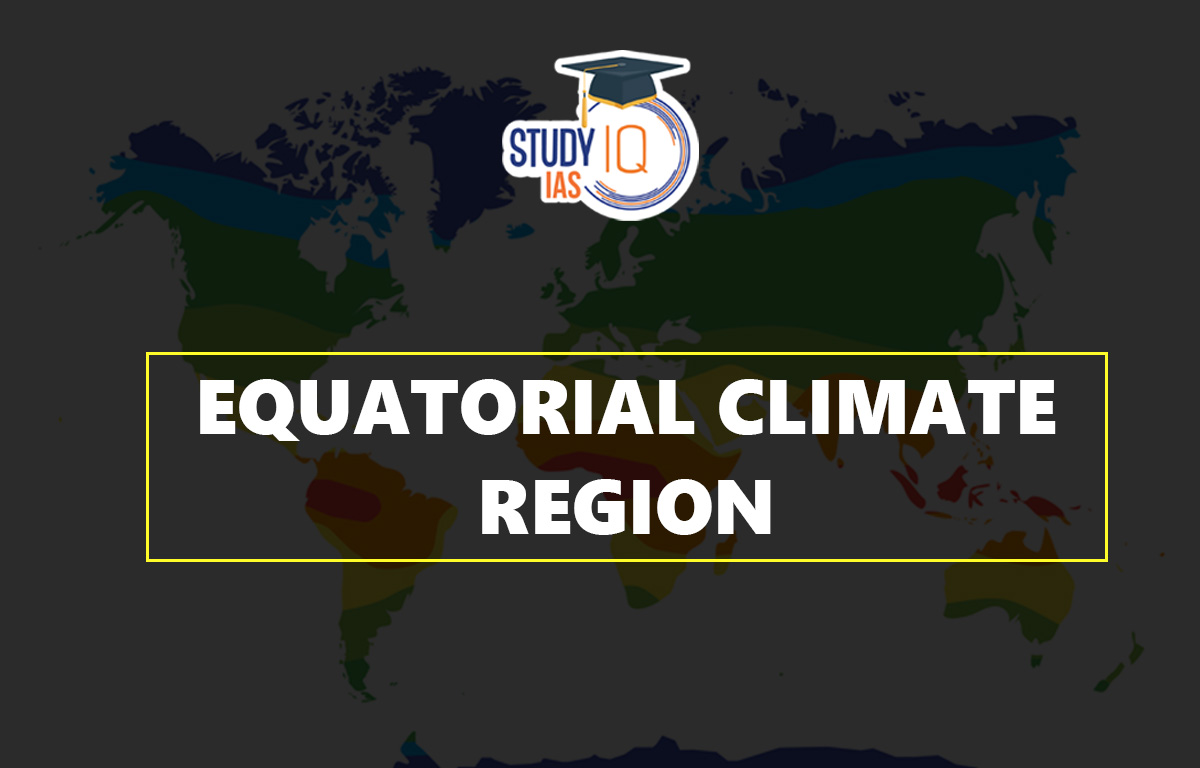Table of Contents
Equatorial Climate Region
Equatorial Climate Regions are hot and wet all year, resulting in a humid climate. Because it rains almost every day, the annual rainfall is high. Temperatures are fairly consistent all year, with only a few degrees of variation. Seasons do not exist.
Read More: Tornado
Equatorial Climate Region Diagram

Read More: Tropical Climate
Hot, Wet Equatorial Climate
Wet equatorial climate, major Köppen climate type characterised by consistently high temperatures (around 30 °C [86 °F]), abundant precipitation (150-1,000 cm [59-394 inches]), heavy cloud cover, and high humidity, with little annual temperature variation.
1. Equatorial Climate Location
The hot, wet equatorial climate is found between 5° and 10° north and south of the equator. Its maximum extent is located in the lowlands of the Amazon, the Congo, Malaysia, and the East Indies.
2. Equatorial Climate Precipitation
Throughout the year, precipitation is abundant and evenly distributed. The annual average is always greater than 150 cm. In some areas, the annual average may reach 250-300 cm. There is no month that does not have rain. The monthly average is usually greater than 6 cm. There is a lot of evaporation, and convection air currents form, which leads to heavy thunderstorms in the afternoons.
3. Equatorial Climate Climatic Conditions
The primary feature of this type of climate is its temperature uniformity throughout the year. This manifests in the form of no winter season. The mean monthly temperature hovers around 27°C with minimal variation. Cloudiness and heavy precipitation moderates the daily temperature. The diurnal temperature range is small, as is the annual temperature range. This climatic zone is subject to seasonal shifting due to seasonal shifts in pressure and wind belts caused by the sun’s northward and southward migration. Two major properties characterize it.
- Uniform and high temperature throughout the year, and
- Uniform and adequate rainfall throughout the year is received through the convective mechanism.
Precipitation is heavy (between 60 to 100 inches). It is well distributed throughout the year. There is no month without rain and a distinct dry season is absent.
4. Equatorial Climate Soil
- The majority of the soil is nutrient-deficient.
- A thin layer of fertile soil forms on the surface as the dead leaves decay.
- Because of its high iron content, it is reddish in colour.
- Excessive rains quickly flush nutrients out of the soil.
5. Equatorial Climate Natural Vegetation
It supports tropical rainforests. For instance, Selvas in the Amazon tropical rain forest. It comprises a multitude of evergreen trees. These include those that yield tropical hardwood, e.g., mahogany, ebony, greenheart, and cabinet wood. Lianas, epiphytic and parasitic plants are also found. Mangroves thrive in coastal areas and brackish swamps. The tropical rainforest grows like a thick canopy of foliage from the top. It is broken only where it is crossed by large rivers or cleared for cultivation. It lacks dense undergrowth as the trees do not allow sunlight to reach the ground.
6. Equatorial Climate Wildlife
The equatorial region is not only home to lush and diverse plants, but also to a diverse range of wildlife. Plant diversity supports a wide range of animals, birds, and insects. The African elephant and the Jaguar are among the fauna found in this region. The Congo basin is home to mountain gorillas, lowland gorillas, chimps, and numerous bird species. Poison dart frogs, margay and collared anteaters, sloths, toucans, spider monkeys, and flying frogs are among the other animals.
7. Equatorial Climate Life and Economy
The forests support the most primitive people, such as hunter-gatherers, and the more advanced ones practice shifting cultivation. Food is abundantly available. Shifting cultivation is practised by clearing the forests. Indian tribes collect wild rubber in the Amazon Basin. The Pygmies gather nuts in the Congo Basin. The Orang Asli make different types of cane products and sell them to people in villages and towns in the jungles of Malaysia.
Read More: Anticyclones
Equatorial Climate Region UPSC
Excessive heat and humidity are hazardous to people’s health. As a result of climate change, the people in this region have become more vulnerable. While the hot and humid equatorial rainforest climate promotes plant growth, it also promotes the growth of bacteria and pests. These, in turn, are to blame for the equatorial region’s high prevalence of illness. Among the 58 diseases spread by vectors in this area are malaria, lymphatic filariasis, and dengue fever.
This article will explain Equatorial Climate Region, which will help you prepare for the UPSC Civil Service exam’s Geography syllabus.


 Desert Climate, Distribution, Climatic C...
Desert Climate, Distribution, Climatic C...
 Deserts of India Map, Features of Thar D...
Deserts of India Map, Features of Thar D...
 Indus Valley Civilization, History, Phas...
Indus Valley Civilization, History, Phas...





















